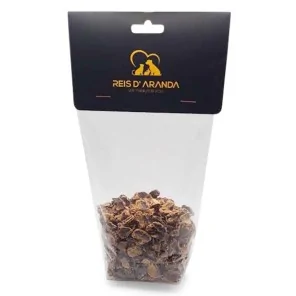Its name says it all: the Vienna blue rabbit comes from Austria. Not only is it beautiful with its shiny blue-grey...
MYXOMATOSIS
INTRODUCTION
Myxomatosis is a major disease of rabbits caused by a poxvirus called myxoma virus. It causes a very mild disease in its original South American host, but in some species of rabbits and hares, especially European rabbits (Oryctolagus cuniculus), it causes a severe disease with high mortality.
WHAT IS MYXOMATOSIS?
Myxomatosis is a major disease of rabbits caused by a poxvirus called myxoma virus. It causes a very mild disease in its original South American host, but in some species of rabbits and hares, especially European rabbits (Oryctolagus cuniculus), it causes a severe disease with high mortality.
The word ‘myxoma’ is derived from the Greek word for mucus and designates a connective tissue tumour usually lodged in mucus. The disease is characterised by tumours on the face and limbs of affected animals.
It is one of two diseases of lagomorphs (a family of mammals including rabbits, hares and pikas) listed in the OIE Terrestrial Animal Health Code and Member Countries and Territories are obliged to report outbreaks in accordance with the OIE Terrestrial Animal Health Code.
HOW IS MYXOMATOSIS TRANSMITTED?
The disease is mainly spread by fleas and mosquitoes that ingest the virus when biting infected animals and then transmit the disease to other susceptible animals. It can also be spread directly from animal to animal or by contact with fomites (contaminated inanimate objects).
SYMPTOMATOLOGY OF MYXOMATOSIS
As is characteristic of pox viruses, the disease produces cutaneous nodules. These first appear at the site of infection, with inflammation around the eyes (big head disease) and genitalia, and secondary skin lesions develop. At the same time there may be severe immunosuppression allowing secondary bacterial infections to develop, so that signs of pneumonia are common.
As the disease progresses, the animal appears more depressed and death from pneumonia is common within eight to fifteen days in the more pathogenic strains of the virus.
A respiratory form of the disease without skin lesions has also been reported.
When introduced in Australia to control the rabbit population, the disease reached a mortality rate of 90%, but natural selection left the most resistant animals alive and the mortality rate is now less than 50%.
CAN MYXOMATOSIS BE CURED?
Since the virus is spread by insects, an important health control measure for domestic rabbits is protection against mosquitoes. If infection occurs, it is necessary to isolate infected animals to prevent the spread of the disease to other susceptible animals.
Myxomatosis currently has no cure and affected animals die within a few days of the first symptoms.
CONCLUSION
Prevention is fundamental and that same prevention includes specific vaccination (every 6 months), putting mosquito nets on windows, ensuring good ventilation and cleanliness and being cautious when going to the countryside or visiting farms, breeding farms or the homes of companions who keep rabbits.
Leave a comment
Log in to post comments
















